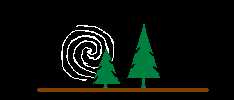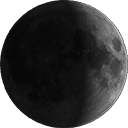Colin Caissie reports on the progress building the club’s Trischiefspiegler telescope. The Trischiefspiegler is an astonishingly complex telescope to build, but will be the ultimate planetary telescope upon completion. And, that’s not just proud bragging. Its 10″ aperture is as large as the atmospheric conditions in Maine ever allow, and its astonishingly long focal length of nearly 17 feel allows the full focal plane to be used at high magnifications, for ultra high resolution views. Best of all, it is unobstructed and totally color-free, assuring detailed, high contrast views. This is literally the ideal telescope for viewing Mars, which is normally too small to see in any detail in ordinary telescopes!
Lenny Arsenault donated the mirrors, built the lightweight, beautiful aluminum frame, and refurbished a heavy-duty telescope mount to hold this large beast. Brian Murphy tweaked it, including finding a way to shroud it from stray light. The fork from Stan Brower’s C14 was enlarged to fit this larger tube. Collimating a Trischiefspiegler’s three mirrors is quite complex, but Colin Caissie has done it before in the rough tube in which the mirrors were first tested. Now, he is adjusting the cells that will allow the mirrors to be collimated in their permanent home.
There is a good chance that the telescope will be ready for viewing Mars at the star party at Brower Observatory on November 19th, 2022. Come see it!
Colin’s report:
<><><><><>
Brian and I loaded the TS on my truck and I have it at my place. It is stunning in the level of workmanship invested so far. Almost ready for FIRST LIGHT.
I started a thread on Cloudy Nights.
https://www.cloudynights.com/topic/850009-finishing-the-10-f20-buchroeder-trischiefspeigler/#entry12278775
My plan is to:
1. Review the spacing and angles of all the components by dummying in the mirrors with identical size blanks.
2. Do the raytrace and determine what the tolerances are on the spacing and angles, and make any minor adjustments. I expect the adjustments to be limited to how tight the collimation screws will be. At f/20 the tolerances are generous, but let’s get as close as we can.
3. Resolve the issue of the primary mirror hitting the frame when we swing it out on the access plate. I think it’s a non-issue. Either it will clear once the spacing is set, or the mirror can be accessed via the side, or we grind a little on the frame.…
4. Maybe build cells to hold the secondary and tertiary mirrors. These cells could also give adjustment for the components if needed by mounting them off center, but generally the two small mirrors should work with silicone blobs. I also want to build covers for each mirror. Each cover should have a plexiglas front so that a centermark can be placed for collimation. We don’t want to mark the mirrors themselves. This is an unobstructed design.
Then it’s time to drag the components up to the Brower. set up the mount and OTA., and devise a cover for the installation. My idea is that we can cover it up while we are tinkering with it for FIRST LIGHT. This, plus the mirror covers should protect it through our Winter planetary season. A small light bulb inside the enclosure will keep moisture at a low level.
I anticipate this scope will be ready for the star party on the 19th.






